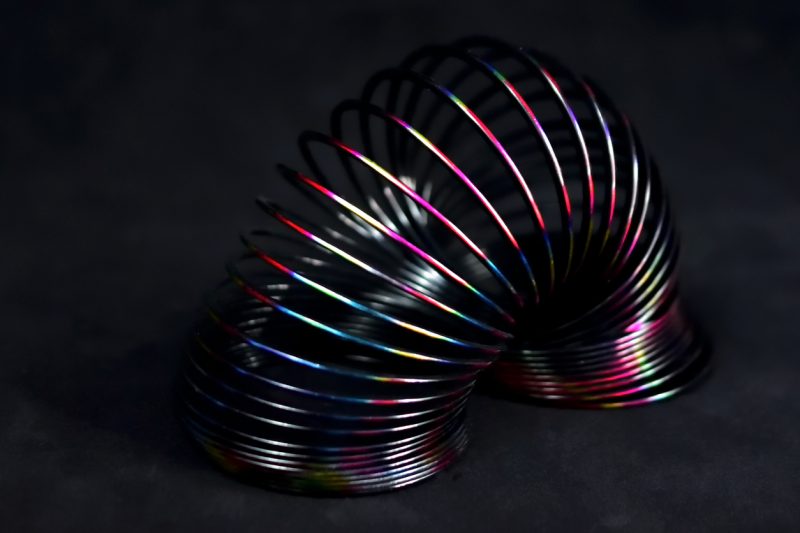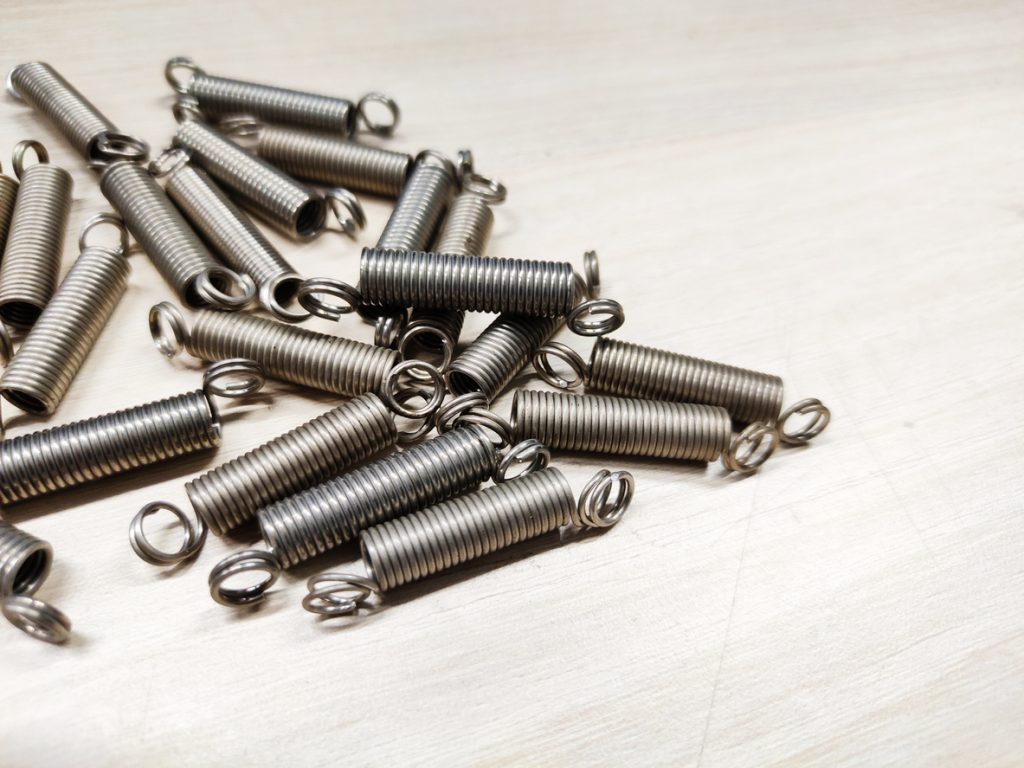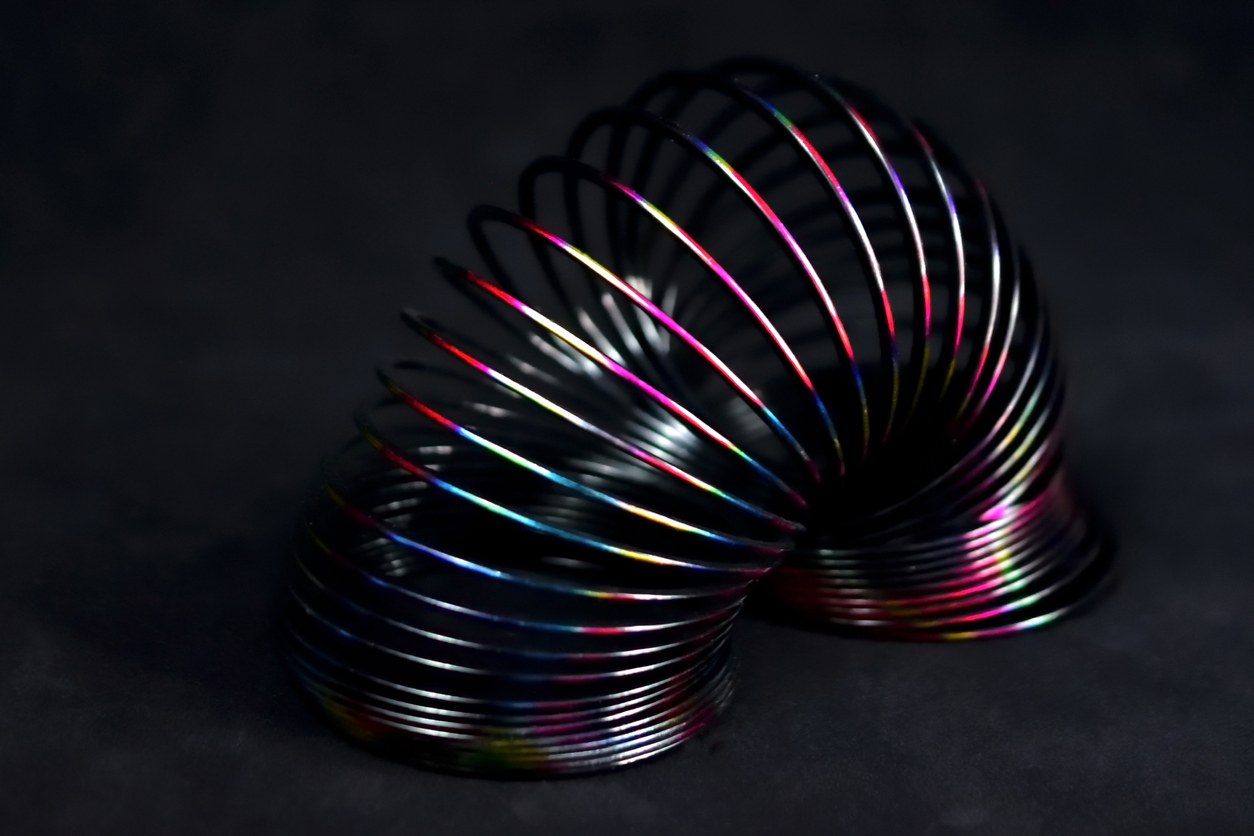Helical springs are some of the most popular and widely used springs available on the market and are common across many applications in many industries. You’ll find helical springs in consumer products, machinery, trains and other modes of transportation and industrial equipment. The helical spring was pivotal to the Industrial Revolution and has continued to play a vital role within almost every industry to this day. Helical springs are invaluable devices that have helped shape the way we live – but what are they, and what makes them so important?

What is A Helical Spring?
Helical springs inherit their name from their helix structure – a corkscrew shape with tangent lines and a constant angle to a fixed axis. The spiral wound wire of a helical spring has a constant coil diameter and a uniform pitch. The world-famous Slinky Walking Spring Toy is an excellent example of a helical spring. However the humble Slinky wouldn’t hold up well when applied to industrial machinery, but it is a great way to demonstrate the structure of these springs and goes a long way to proving just how versatile they are.
A helical spring is essentially an elastic coil, and you will often find them referred to as coil springs. They are formed by tightly winding a piece of wire into a cylinder, and the nature of their design allows them to absorb, maintain or eject force or energy between two surfaces. This functionally sees extended use across an overwhelmingly large number of applications, many of which we experience every day without a second thought.

Types of Helical Spring
Under the umbrella of helical springs, many different types are designed to be suited to various applications. One of the most common questions asked when deciding what kind of helical spring is correct for a given application concerns the type of load the spring will be expected to carry. From here, you can begin to identify the right kind of spring for the job. As a quality spring manufacturer, we at Airedale Springs understand the difference between various types of helical springs and where they are best applied. Let’s take a look at some of the most popular types available.
Compression Springs
Compression Springs are some of the most popular helical springs available, designed to resist the force applied to them when compressed. They are open-coiled and come in a variety of different shapes, including:
- Conical
- Hourglass
- Barrel
Compression springs are designed to act as a buffer between two objects, absorbing the energy from a load in any application where resistance to linear compression needs to be achieved. They can be placed in holes or over rods and shafts.
Tension Springs
Tension springs are also known as extension springs. They have a tightly wound coil that end with either loops or hooks, allowing them to be attached to separate objects. As an outside force pulls on the spring and creates tension, mechanical energy is expended. The further the spring is extended by the external force, the more energy is required to return the spring and the components it is attached to back to its resting position.
Torsion Springs
Much like compression springs, torsion springs store energy; however, this is achieved when the spring is twisted or rotated, using torque force. When twisted, a torsion spring exerts force equivalent to the amount applied to it but in the opposite direction.
Where Are Helical Springs Used?
As discussed, helical springs see wide use across diverse applications. Compression springs can be found in products as small as ball-point pens, electrical switches, and button-operated devices. They are also common in larger domestic household furniture like sofas, armchairs and mattresses, and although you can’t see them, they’re working hard to keep you comfortable. You’ll also find the same style of spring playing a major role in vehicle suspension, valves and medical devices.
Tension springs see industrial use across the energy, agriculture, aerospace and rail industries. You’ll find them in both automotive interiors and exteriors, farming machinery, garage doors, medical stretchers and surgical lights. An easy way to show a tension spring in action is to look at a trampoline, which uses tension to give the trampoline bed its bounce.
Prime examples of torsion springs are door hinges of all sizes, from the doors in your house to car doors, garage doors, all the way up to industrial heavy-duty overhead doors in warehouses. You’ll also find tiny torsion springs in clothespins, mechanical watches, clipboards and mousetraps.
The simplicity and functionality of helical springs make them versatile and suitable for such a vast range of uses, from everyday products you’ll find around the home to industrial applications. Their durability and precision, coupled with their reliability as a means of storing mechanical energy, mean that helical springs are an integral part of our modern world.
Here at Airedale Springs, we’ve been a leading spring manufacturer of high-quality helical springs for over 75 years. We have a thorough understanding of which spring is suitable for each application and can work with you to find the correct spring for your job. Call us today on 01535 643456 or fill out our enquiry form for more information.
Get in Touch Today for Helical Springs:


